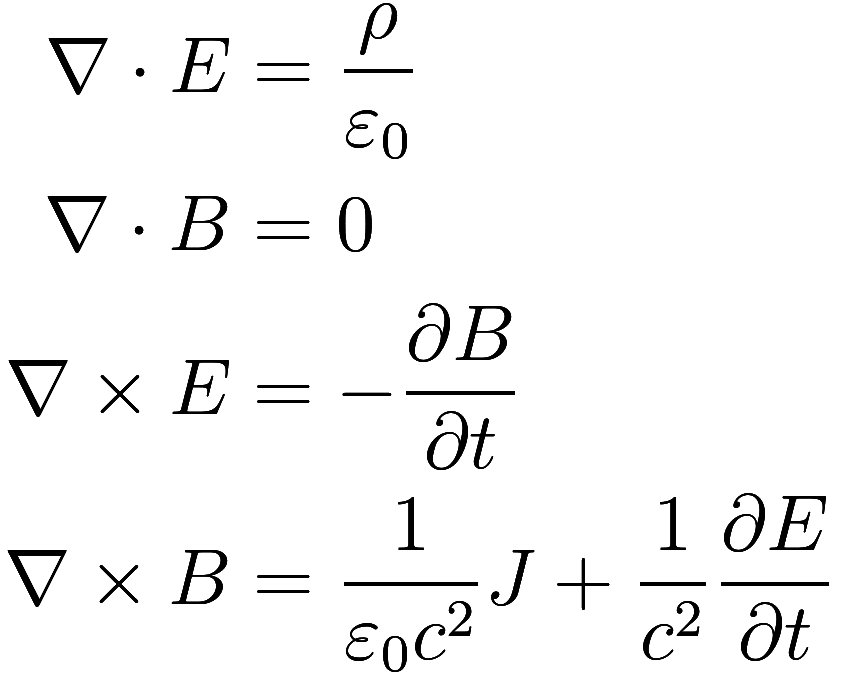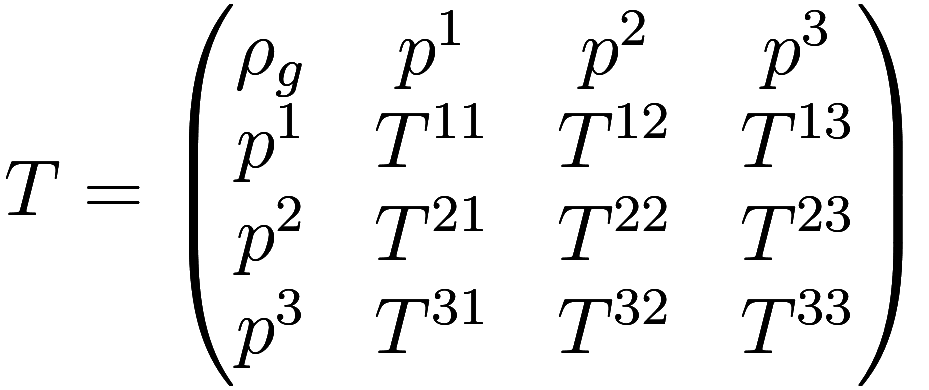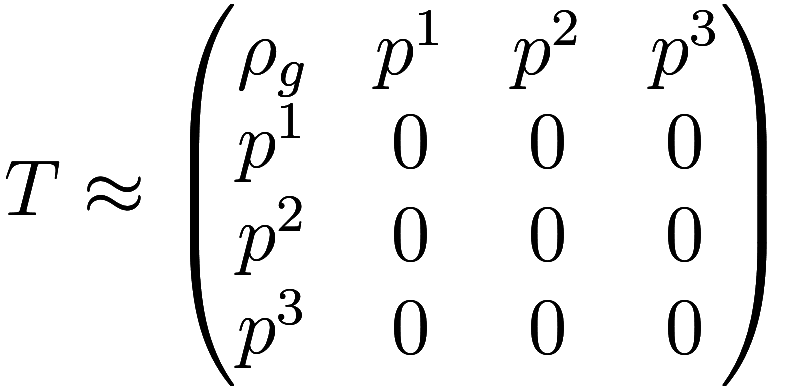In Newtonian gravity, the acceleration towards a massive particle
with mass and distance
is
times some constant. What happens if the particle is moving? We know
from relativity that information cannot travel faster than the speed of
light , so any movements of the particle in the last
time cannot influence the current
gravitational acceleration.
One might guess that a test particle is simply accelerated towards
where the massive particle was ago. However, in relativity, it is impossible
to measure your absolute velocity – only the relative velocity
between particles is observable. Therefore if the test and massive
particles are moving at the same velocity, then the
acceleration must be directly towards where the massive particle is and
not towards where it was, in contradiction to our guess.
Reality is more complicated, and we find that the gravitational force depends on the velocities of the particles. This is analogous to electromagnetism: while both the electric and magnetic forces were discovered before relativity, with the discovery of relativity it was realized that the magnetic force is simply the velocity-dependent component of the electric force.
One observable consequence of the gravity’s velocity-dependence is frame-dragging, in which a rotating massive object causes nearby objects to counter-rotate.
Assuming that gravity, like electromagnetism, is Lorentz invariant we can work out the full non-static gravitational equations – although see the caveat at the end. The resulting theory is called gravitoelectromagnetism, and was suggested in 1893 by Oliver Heaviside.
Maxwell’s equations for electromagnetism are

where and
are the electric and magnetic fields,
is the charge density, and
is the charge flux; the other terms being
physical constants.
Then the equations for gravitoelectromagnetism are almost identical:

Here is mass density,
is mass flux, and
is the “gravitoelectric” field (i.e., the
conventional gravitational field) and
the “gravitomagnetic” field (i.e., the
velocity-dependent component).
These equations show how the electromagnetic fields and gravitoelectromagnetic fields
are defined by a distribution of charges
(
or
) and their velocities (
or
). Having defined the fields, the force exerted
on a slow test particle of charge
or mass
and velocity
is
![]()
After adjusting constants, the electromagnetic equations and
gravitoelectromagnetic equations are almost the same as each
other: the factor of 4 in the gravitomagnetic force does not go away.
This may seem unimportant, but in fact arises from differences in the
fundamental nature of gravity and electromagnetism, and has a crucial
impact in the usefulness of gravitoelectromagnetism as a theory. (Heaviside’s 1893 formulation
omits the contribution to force entirely.) Recall of
course that gravitoelectromagnetism is only an approximation of general
relativity, which gives a fully accurate theory of gravity. When performing
this approximation, the factor of 4 inevitably arises. While general
relativity is rather beyond me and I have only the dimmest understanding
of why there is a 4, I will present what I believe the root cause to
be.
In special relativity, Maxwell’s equations can be condensed into a single equation
![]()
where is the electromagnetic
tensor and contains all the information of the electric and magnetic
fields
and
, and
is the four
current, which has four dimensions. The time-like component of
the four current is the charge
, and the space-like coordinates are the charge
flux:
![]()
In contrast, in general relativity the source of gravity is the stress-energy
tensor (“tensor” is physicist-speak for a matrix, and a distant
relative of the mathematical notion of tensor). The time-time component
of the stress-energy tensor is the mass density , the time-space components are the momentum
density, and the space-space components are the momentum flux:

The momentum flux is the “stress” part of the stress-energy tensor, with the diagonal components being the pressure, and the off-diagonal components being the shear stress. These stress terms have no analogue in electromagnetism, so if we ignore them we are left with

The momentum terms, which are labelled here, become the gravitomagnetic terms
in gravitomagnetism. However, unlike in actual
electromagnetism, there are two copies of each of these terms. As a
consequence, a particle with gravitoelectric charge (i.e., mass)
will effectively have a gravitomagnetic charge of
. Since the strength of the gravitomagnetic force
is proportional to the product of the gravitomagnetic charges of the
particles involved, and both of those charges are doubled, the
gravitomagnetic force is 4 times stronger than the analogous magnetic
force.
(This above explanation could well be wrong, it was the best I was able to infer from staring at the linked wikipedia articles.)
This distinction between electromagnetism and gravity is sometimes
described by calling the electromagnetic field spin 1, meaning
it is a vector field with components, and the stress-energy tensor field
spin 2, meaning it is a tensor field with
components.
Note a critical consequence of arbitrarily zero’ing out the stress
terms in : the resulting tensor field is no longer
Lorentzian, so gravitoelectromagnetism is not invariant under Lorentz
transformations. The choice of which terms in
are zero’d out depends on which inertial frame we
measure the coordinates in – changing frames causes the terms to mix
with each other. This result somewhat defeats our initial purpose in
introducing gravitomagnetic terms to salvage Newtonian gravity from
being non-Lorentzian. Arguably it is even “less” Lorentzian than
Newtonian gravity, as 4 is further from 1 than 0. We could achieve true
Lorentz invariance by replacing the factor of 4 with 1 in the
gravitomagnetic force, but at the cost of no longer approximating the
true gravitational force anymore.
Follow RSS/Atom feed for updates.